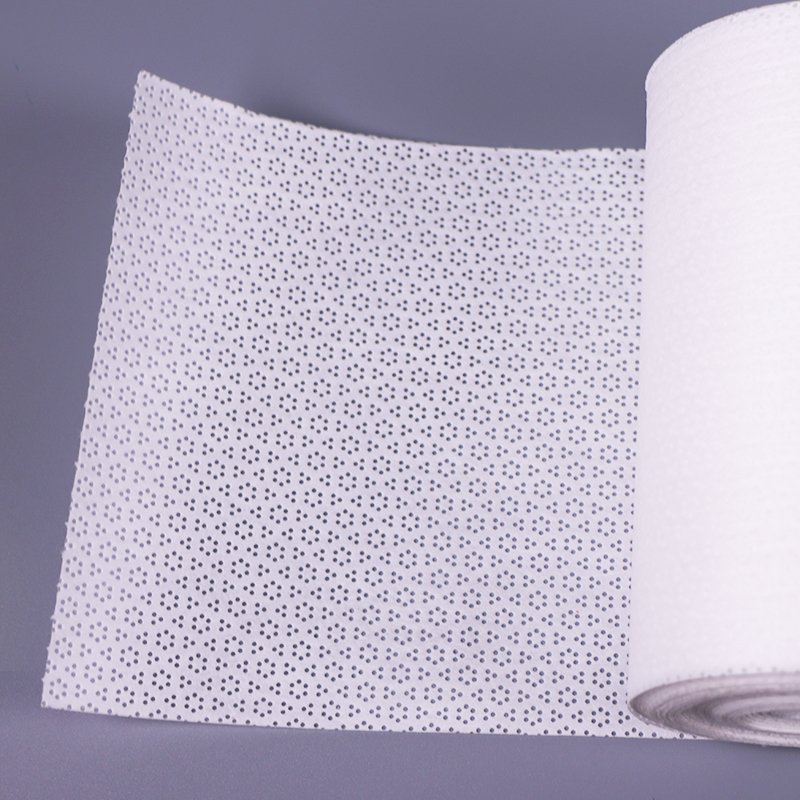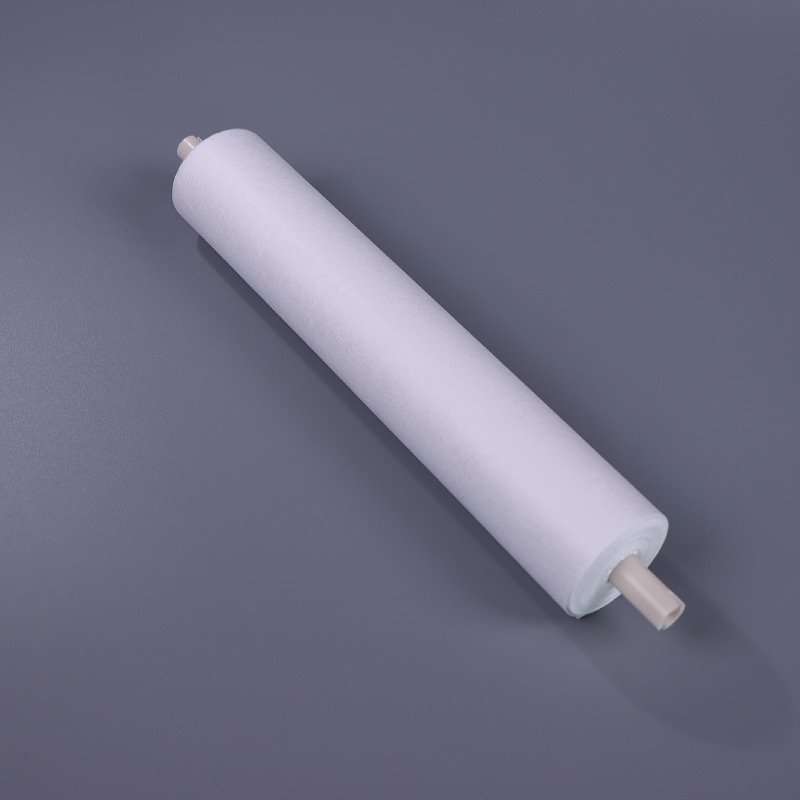If you work in a cleanroom, you know that not all wipes are created equal. Choosing the wrong type isn’t just an inconvenience—it can lead to contamination, production delays, and even costly compliance failures.
Two of the most common cleanroom wiping materials are polyester and poly-cellulose blends. Both are popular, but they serve very different purposes. One offers exceptional cleanliness and durability for critical processes. The other is prized for absorbency and cost efficiency in less sensitive zones.
So which one fits your cleanroom? In this guide, we’ll break down what each material offers, how they perform in key areas like particle control, absorbency, chemical compatibility, and cost, and help you avoid common mistakes when making your choice.
What Makes Polyester Wipes Different?
Polyester wipes are typically made from 100% continuous filament polyester fibers, tightly knitted to minimize loose particles. Most high-quality polyester wipes also have laser-sealed or ultrasonically sealed edges, which significantly reduces fiber shedding.
Why does this matter? In industries like semiconductor manufacturing or optics assembly, a single particle out of place can lead to expensive yield loss. Polyester’s structure ensures ultra-low particle release, making it suitable for ISO Class 3–5 environments.
Beyond cleanliness, polyester wipes have excellent chemical resistance. They stand up to aggressive solvents like IPA, acetone, and even strong acids without degrading. This durability also makes them resistant to tearing during scrubbing or wiping sharp surfaces—something nonwoven wipes can’t guarantee.
Where they shine:
-
Semiconductor wafer cleaning
-
Optical lens preparation
-
Sterile pharmaceutical packaging zones
However, these advantages come at a price. Polyester wipes are among the most expensive cleanroom consumables, often costing 2–3 times more than blended alternatives. That’s why it’s important to reserve them for areas where ultra-clean performance is truly needed.
Why Do Some Facilities Choose Poly-Cellulose Wipes?
If polyester wipes are so superior, why do poly-cellulose wipes still dominate in many cleanrooms? The answer comes down to absorbency and cost.
Poly-cellulose wipes are a nonwoven blend, typically around 55% cellulose and 45% polyester. This structure gives them excellent liquid absorption, making them perfect for cleaning up spills, applying solutions, or wiping large surface areas quickly.
Because they contain cellulose—a natural fiber—they are more hydrophilic than pure polyester. This means they pull in and hold liquid faster. For routine cleaning, equipment wipe-downs, or maintenance in ISO Class 6–8 environments, they provide solid performance at a fraction of the cost of polyester wipes.
But here’s the catch: the nonwoven structure sheds more fibers than knitted polyester. That makes them unsuitable for highly sensitive processes like wafer cleaning or photolithography, where contamination control must meet the strictest limits.
Where they fit best:
-
Utility areas
-
Equipment cleaning
-
General maintenance tasks
If you need high absorbency without breaking the budget—and your environment isn’t ultra-critical—poly-cellulose wipes are a smart choice.
How Do They Compare in Cleanliness and Contamination Control?
Cleanliness is the single most important metric for wipes in controlled environments. Here’s where the two materials diverge sharply.
Polyester wipes, especially those with sealed edges, are engineered for minimal linting and fiber release. They consistently meet the particle limits required in ISO Class 3–5 cleanrooms. By contrast, poly-cellulose wipes are considered acceptable only in ISO Class 6–8 areas because they release more particulates during use.
In practice, this means you can safely use polyester wipes on wafer carriers, optical lenses, or sterile packaging materials without introducing contamination. Poly-cellulose wipes, on the other hand, are better suited for cleaning benches or wiping down external surfaces where ultra-clean performance isn’t required.
Absorbency: Does It Matter for Your Process?
Absorbency often determines whether a task gets done efficiently.
-
Polyester wipes have moderate absorbency. They’re great for applying IPA to precision surfaces or cleaning without streaking. Their knitted structure controls how much liquid is released back, preventing over-wetting sensitive components.
-
Poly-cellulose wipes excel at soaking up large spills quickly. The cellulose content acts like a sponge, making them the go-to option for water-based cleaning or surface preparation where liquid removal is a priority.
If your process involves heavy solvent use on sensitive surfaces, polyester wipes will provide more controlled application. For general cleaning or frequent spill management, poly-cellulose wipes will save both time and money.
Chemical Compatibility
Not all wipes can handle strong chemicals.
Polyester wipes maintain integrity when exposed to harsh solvents, acids, and bases. This is crucial for advanced manufacturing processes, such as semiconductor fabrication, where cleaning chemicals are aggressive and precision is everything.
Poly-cellulose wipes perform well with mild solvents but degrade in harsh conditions. Extended exposure can cause cellulose fibers to weaken or break, leading to linting and contamination. If your SOP involves strong chemicals, poly-cellulose is not an option for critical areas.
Cost vs Risk
Here’s where many cleanrooms make mistakes. Polyester wipes can cost 2–3 times more than poly-cellulose, tempting purchasing managers to standardize on cheaper wipes. But using poly-cellulose in an ISO 4 environment can have devastating consequences.
Consider this scenario:
A semiconductor fab used poly-cellulose wipes during equipment cleaning in a photolithography bay. Result? Micro-particle contamination led to wafer defects, costing thousands of dollars in lost yield. The savings on wipes? Negligible compared to the loss.
On the flip side, using polyester wipes everywhere—like in maintenance or warehouse areas—wastes money without adding value. The key is zone-based selection: reserve polyester for the most sensitive operations and use poly-cellulose for less critical tasks.
ISO Standards
ISO 14644 standards define cleanroom classes based on particle count. Wipes must align with these requirements.
-
ISO Class 3–5: Polyester wipes are mandatory. Anything else risks non-compliance.
-
ISO Class 6–8: Poly-cellulose wipes are acceptable for general cleaning tasks.
Pharmaceutical facilities also follow GMP guidelines, which often require sealed-edge wipes (usually polyester) in critical manufacturing zones. Ignoring these standards can trigger audit failures—a costly mistake.
The next generation of cleanroom wipes focuses on sustainability and innovation. Expect to see:
-
Recycled polyester wipes to reduce environmental impact
-
Fully biodegradable cellulose-based wipes for non-critical zones
-
Smart wipes with contamination detection indicators
These trends reflect a growing demand for products that deliver high performance while supporting green manufacturing initiatives.
Final Thoughts: Which One Should You Choose?
There’s no universal answer because both materials have a place in contamination control strategies:
-
Choose polyester wipes for critical environments where even one fiber can jeopardize production.
-
Choose poly-cellulose wipes for utility cleaning where absorbency and cost efficiency matter most.
By aligning wipe selection with ISO class, process risk, and budget priorities, you can protect quality, ensure compliance, and optimize costs.
Quick Comparison Summary
| Feature | Polyester Wipes | Poly-Cellulose Wipes |
|---|---|---|
| Particle Control | ISO Class 3–5 | ISO Class 6–8 |
| Absorbency | Moderate | High |
| Chemical Resistance | Excellent | Limited |
| Cost | Higher | Lower |


-5.jpg)

-4.jpg)